X-59 Supersonic Test Jet Looks Positively Sci-Fi Head-On
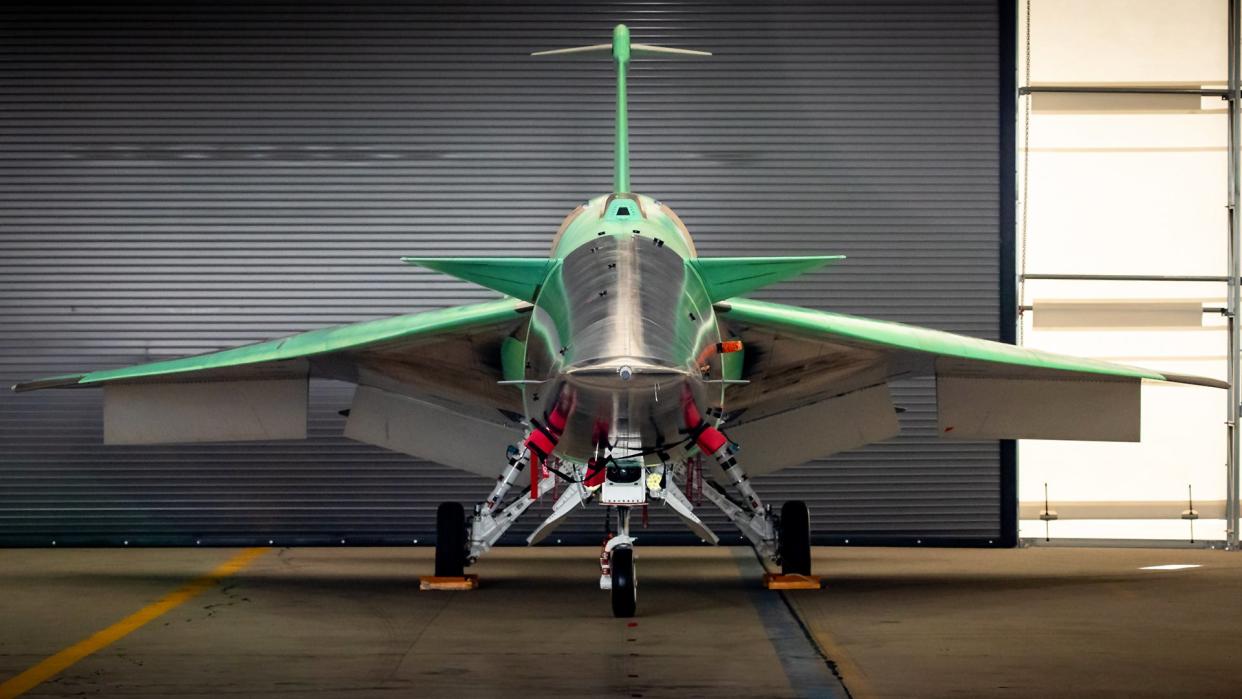
Lockheed Martin’s latest photos of the experimental X-59 Quiet Supersonic Technology aircraft, or QueSST, built by the company Skunk Works for NASA, provide perhaps the best view so far of its radical forward-vision system, as well as revealing the jet in an increasingly complete state. The aircraft, which provides no traditional forward visibility to its pilot, is by far one of the most incredible looking and outright exotic flying machines we have seen, with its side profile equally as impressive as its head-on view.
Ultimately, it’s planned that the X-59 will achieve supersonic speeds over land that create no more than a sonic ‘thump’ — rather than the ‘boom’ associated with previous supersonic transports. That could convince U.S. and international regulators to change the laws governing supersonic commercial aviation.
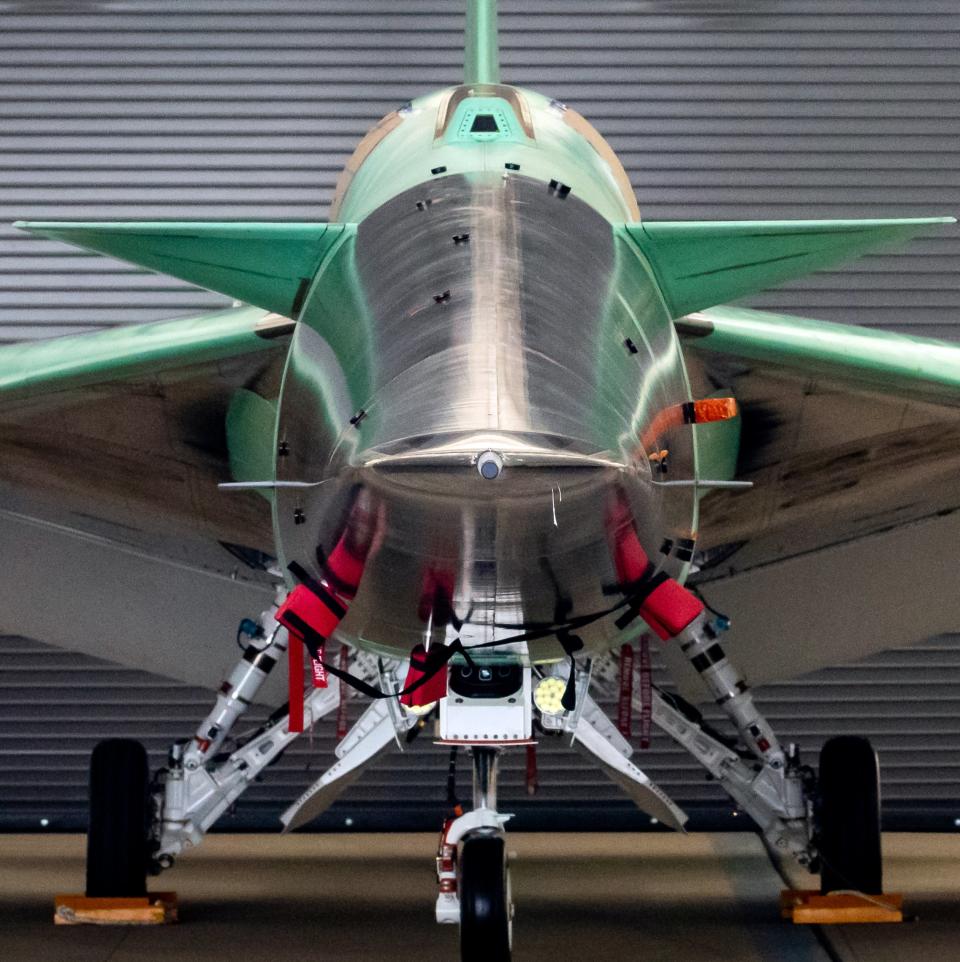
While we have looked at the X-59’s prodigious nose in the past, these new frontal views of the jet really bring across the fact that the pilot has no conventional means of looking at the outside world, at least in the forward sector.
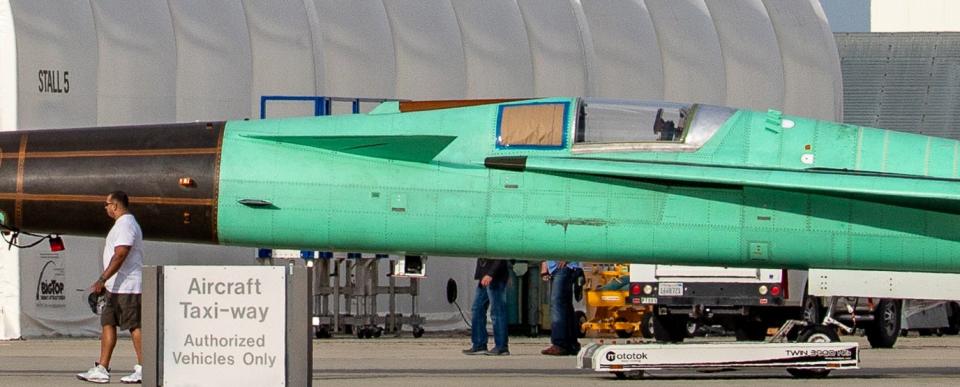
This is all part of an overall design that’s specifically intended to reduce the kinds of sonic booms that have long been an obstacle in the way of commercial supersonic flight over land. With such a long snout ahead of them, the X-59’s pilot instead relies upon the eXternal Vision System (XVS) and an array of forward-facing high-resolution cameras. An aperture for the 4K camera used in the XVS can be seen in these new photos, located atop the nose, broadly above where the canard foreplanes are located.
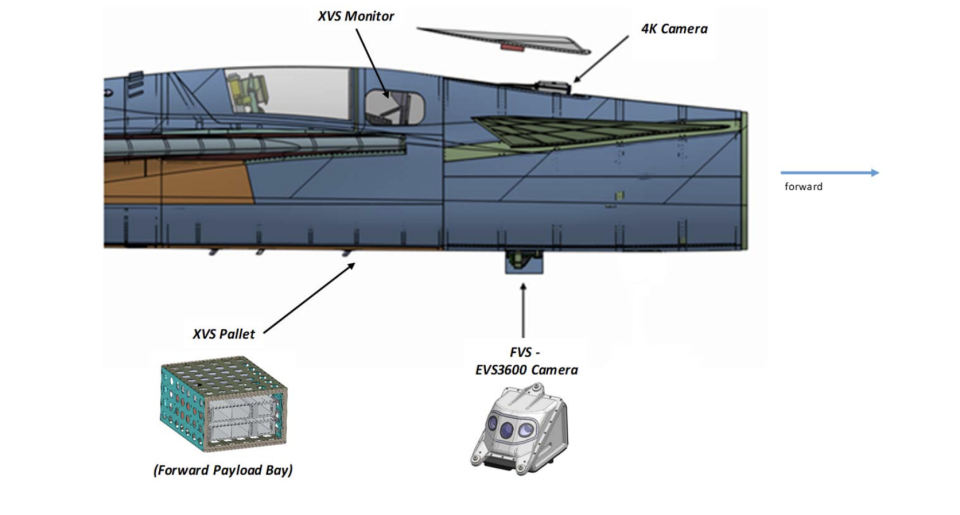
The latest series of images shows NASA’s X-59 on the flight line at Lockheed Martin Skunk Works in Palmdale, California, on June 19, 2023. “The move from its construction site to the flight line is one of many milestones that prepare the X-59 for its first and subsequent flights,” NASA says. “Next up, the team will conduct significant ground tests to ensure the aircraft is safe to fly.”
https://twitter.com/LockheedMartin/status/1676939052791021569?s=20
Lockheed Martin also posted a new photo to Twitter today, explaining that the aircraft has been moved to a “run stall” on the flight line at Palmdale, for further ground testing, including vibration testing. Previously, the X-59 had been expected to fly before the end of 2022, but this was missed, and it’s now anticipated to take to the air before the end of this year.
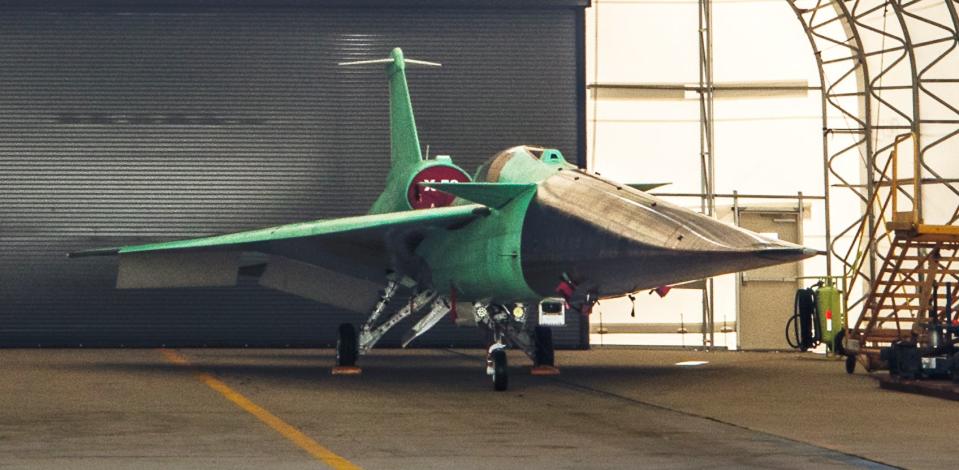
After initial flight tests, the all-important noise testing will begin, culminating in a planned series of missions that will explore how communities actually respond to the aircraft’s sound when it passes overhead.
As for the XVS, researchers at NASA’s Langley Research Center in Hampton, Virginia, completed tests of the system back in 2021.
NASA describes the XVS as “a forward-facing multi-camera and display system that shows the airspace in front of the X-59 QueSST. A 4K-monitor serves as the central ‘window’ allowing the pilot to safely see traffic in their flight path while also providing graphical flight data in an augmented reality for approaches, landings, and takeoffs.”
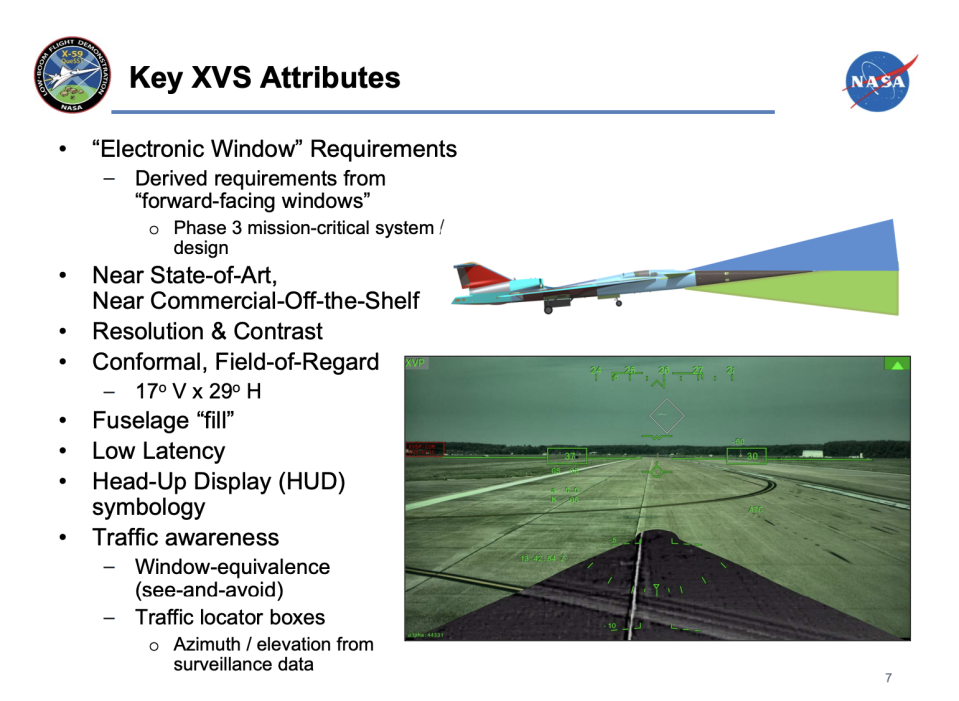
Essentially, the 4K camera mounted atop the nose covers the sector above the nose, while the sector below is observed using the Forward Vision System (FVS), comprising an EVS3600 camera. The fairing for this can also be seen in the new head-on images of the jet.
“Our goal is to create an electronic means of vision for the X-59 pilot that provides performance and safety levels equivalent to, or better, than forward-facing windows,” explained Randy Bailey, XVS subsystem lead, in a September 2021 press release.
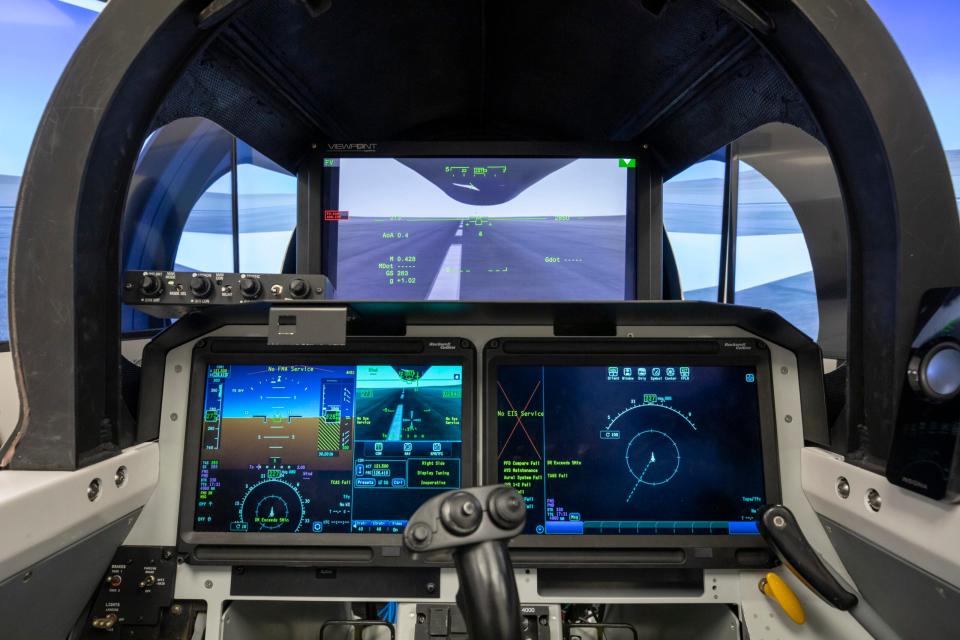
Prior to installing XVS in the X-59, the technology was tested in flight aboard NASA’s Beechcraft UC-12B King Air. This program involved installing hardware in the King Air’s cabin that was wired to an exterior camera on the nose. Live flight-test scenarios were flown to collect data on the pilot’s ability to see and maneuver around another aircraft in the airspace.
During these tests, one pilot was seated in the cockpit of the King Air and could see through the forward windows, while another pilot was seated in the cabin with only the XVS available for external awareness.
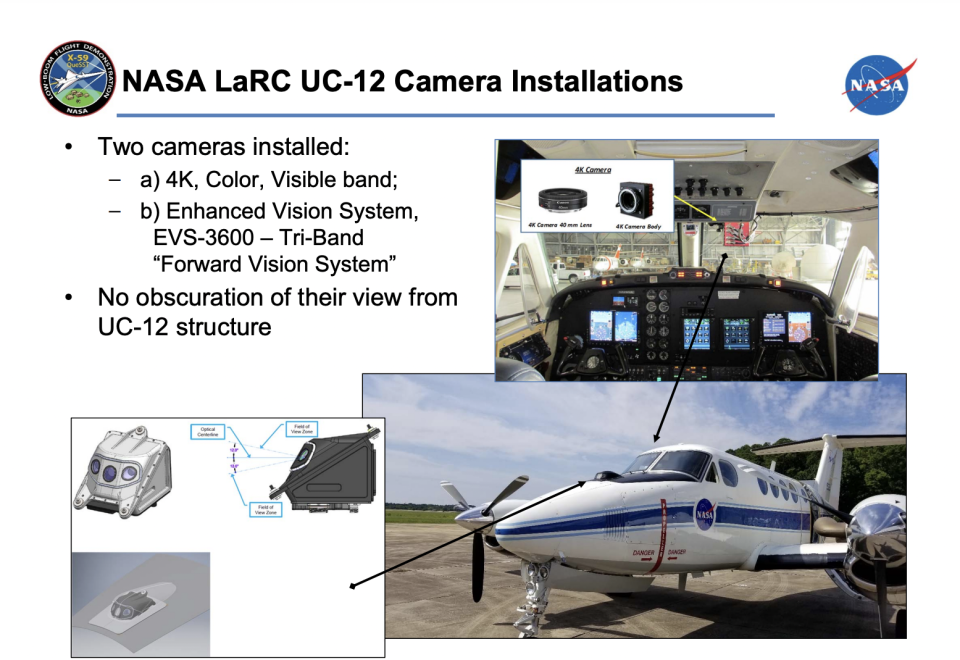
All of this early testing has been required to prove NASA’s goal of a vision system that provides “visibility of the external scene for the flight crew analogous or equivalent to forward-facing windows in conventional aircraft.”
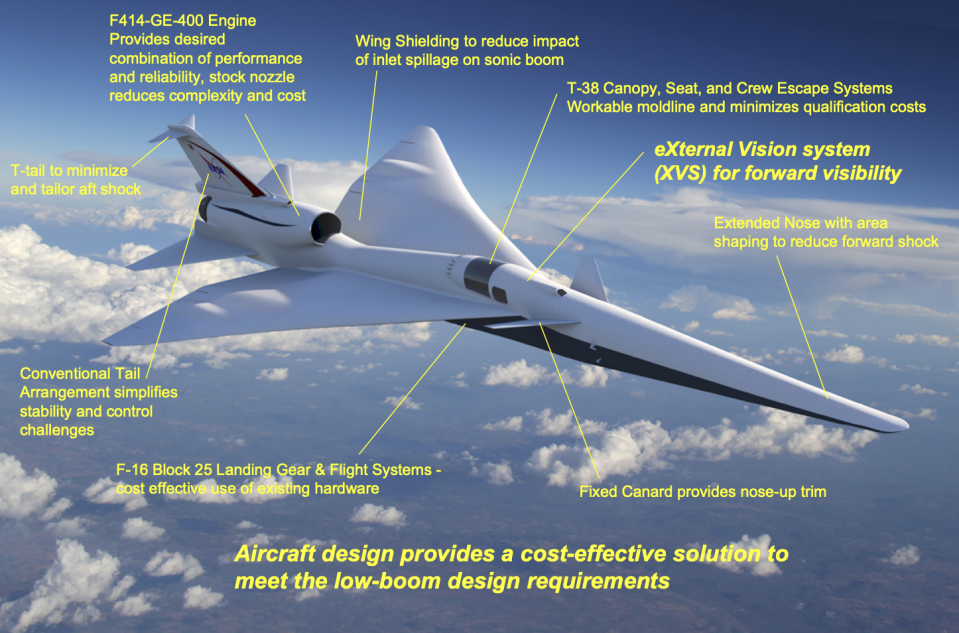
It's worth mentioning that another Skunk Works creation, the notional Dark Star hypersonic test jet Pete Mitchell flew in Top Gun: Maverick also featured a similar configuration with no standard forward visibility to be had.
While the XVS is clearly critical to the X-59 achieving its aims of demonstrating a much lower noise signature than previous supersonic transports, it’s just one of many exotic aspects of a fascinating program. If they all work as planned, the results could well help usher in a new era of supersonic passenger aircraft. Whatever happens, the upcoming flight-test program will certainly be one to watch.
Contact the author: thomas@thedrive.com

